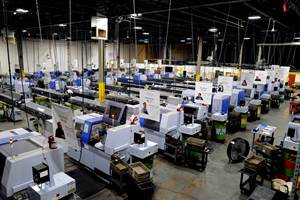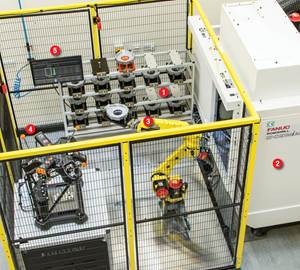Let’s Set the Record Straight on Industry 4.0
With phrases like "Industry 4.0," "big data," "Internet of Things" and "The Digital Factory" floating around, it's time to lay down some definition.
Share






It seems every trade magazine I pick up nowadays has an article on Industry 4.0 or big data or the Internet of Things or the Digital Factory. These terms are being pitched around like a rugby ball, and almost always with a decided lack of clear definitions.
So, as the saying goes, let’s set the record straight, at least on the meaning of Industry 4.0.
After German Chancellor Angela Merkel, in conjunction with her ministers of industry and education, ordered a study about the manufacturing environment a few years ago, the acatech, a portmanteau word for academic and technology at Germany’s National Academy of Science and Engineering, drafted this country’s official vision of Industrie 4.0 (German spelling). This was to be the coordinated initiative between the IT world, universities and various manufacturing associations to reshape industry. It would seek to combine physical, virtual, IT and cyber systems, and thereby create a new environment for workers and machines. The 4.0 part of the name, incidentally, derives from the fourth industrial revolution—the predecessors being the emergence of mechanization through steam/water power, the impact of electricity on mass production and the invention of the computer, which led to our modern concepts of IT and automation.
Since then, Industry 4.0 has been adopted worldwide as a goal in industry, especially the manufacturing world and, specifically for our purposes, the machine tool market. At this moment, Industry 4.0 represents a high point of dynamic achievement, where every company, whether a large OEM, major-tier supplier or smaller job shop, can implement and benefit from the technologies and communications platforms available today.
Without question, this vision is less a look into the future and more a vibrant collaboration between IT, machine tool builders, industrial automation integrators and especially motion control suppliers. These suppliers function at the heart of the machines, simultaneously effecting motion, and gathering and transmitting the relevant data to the appropriate control link in the company’s infrastructure, all at speeds measured in nanoseconds.
To work effectively, the Industry 4.0 concept requires a standardization of platforms in both communications and language used. In America, the MTConnect effort has been a good start toward standardization in shopfloor data exchange and interoperability. Such efforts must continue so connectivity and Internet data can work together seamlessly.
While the big data idea overwhelms most managers, technicians and operators alike, the key is manipulation of that data in a hierarchy of need, to borrow a term from the psychology world. Mobile devices, tablets, cellphones and now the CNC screen itself can be useful tools in transmitting the most important data from the shop floor to the top floor, or just down the hall to the front office. The small shop owner would be well advised to heed this trend and respond appropriately. That action might take the form of using an integrator to tie all machine functions and outputs together for that day when the OEM or upper-tier customer demands it. In many industrial sectors, that day has already arrived.
Lastly, the cybersecurity issue cannot be understated, as we will see a shift from the open to the closed cloud for data storage in factory or shop networks. The protection of your intellectual property is paramount, on a global scale, today. To overlook that reality is to compromise the stability and security of your company.
Welcome to the future.
Related Content
Which Approach to Automation Fits Your CNC Machine Tool?
Choosing the right automation to pair with a CNC machine tool cell means weighing various factors, as this fabrication business has learned well.
Read MoreInside the Premium Machine Shop Making Fasteners
AMPG can’t help but take risks — its management doesn’t know how to run machines. But these risks have enabled it to become a runaway success in its market.
Read More5 Stages of a Closed-Loop CNC Machining Cell
Controlling variability in a closed-loop manufacturing process requires inspection data collected before, during and immediately after machining — and a means to act on that data in real time. Here’s one system that accomplishes this.
Read MoreUsing Automation to Reduce COGS and Stay Globally Competitive
Decade-long, multiphase automation investments lower operating costs and maintain technology lead in an increasingly competitive global market.
Read MoreRead Next
Machine Shop MBA
Making Chips and 91ÊÓƵÍøÕ¾ÎÛ are teaming up for a new podcast series called Machine Shop MBA—designed to help manufacturers measure their success against the industry’s best. Through the lens of the Top Shops benchmarking program, the series explores the KPIs that set high-performing shops apart, from machine utilization and first-pass yield to employee engagement and revenue per employee.
Read MoreLast Chance! 2025 Top Shops Benchmarking Survey Still Open Through April 30
Don’t miss out! 91ÊÓƵÍøÕ¾ÎÛ's Top Shops Benchmarking Survey is still open — but not for long. This is your last chance to a receive free, customized benchmarking report that includes actionable feedback across several shopfloor and business metrics.
Read MoreAMRs Are Moving Into Manufacturing: 4 Considerations for Implementation
AMRs can provide a flexible, easy-to-use automation platform so long as manufacturers choose a suitable task and prepare their facilities.
Read More


















